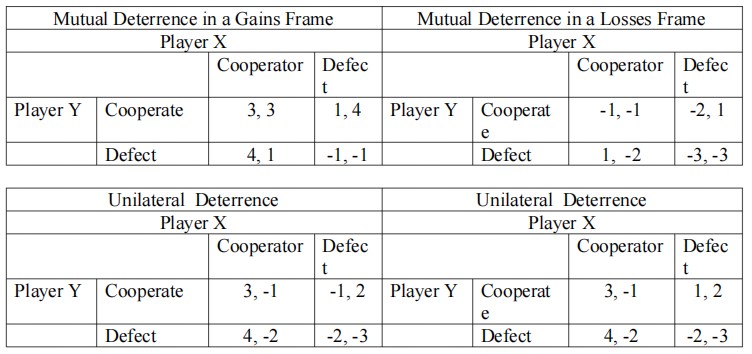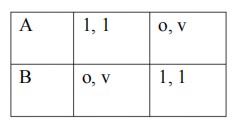“People are concerned more with the psychological construction of the world rather than the perception of the actual world”1 .
While Pakistan has always maintained that, its nuclear doctrine and strategy is wholly and solely India – centric, “Nuclear deterrence has assumed that life – saving property for Pakistan.2 Pakistan already has around 20 – 25 conventional nuclear weapons more than India, and refuses to define precise trigger points for nuclear use.
“….. a policy of ambiguity would appear to be best for Pakistan‟s security. Spelling out its nuclear doctrine would detract from the imperative of uncertainty only when a nuclear strike as a last resort would ……. reinforce maximally credible nuclear deterrence by raising the threshold of Indian calculations of unacceptable risk.”3
In April 2001, Pakistan conducted a test of tactical nuclear weapon with short range missile. Pakistan‟s Inter Services Public Relations Directorate described Nasr as a Quick Response Weapon designed to support “full spectrum deterrence” with a range of 60 Kms.4 apparently as a response to India‟s “cold start” strategy (Vijayee Bhava and Sudarshan Shakti), which Gen. V.K. Singh (2003) argued could be accomplished in less than 7 days.
Proliferation optimist Sumit Ganguly postulates that, the availability of nuclear arsenal in South Asia would contribute to the regional stability and would continue to be so, unless India obtained and deployed effective Antiballistic Missile System. While the proliferation pessimists (S. Paul Kapoor) maintain that, Pakistani possession of nuclear weapon shielded them of all-out Indian retaliation near the turn of the century, thus would increase the aggressive behaviour.
“While Pakistan moves towards tactical nuclear weapons, there is an increasingly high risk of nuclear theft.” (NDTV.com)
Despite repeated statements from the highest quarters from Pakistan, it is Pakistan – not India that is the Revisionist Power. 5 As India has never been an existential threat to Pakistan.
Pakistan‟s tactical nuclear posture needs to be looked at from the point of view of the literature on the Hybrid Regimes, especially by O‟Donnel and Zakaria who state Pakistan to be exclusive, delegative, illegal, tutelary, pseudo democracy.6 And to assume that, Pakistan is on a path to consolidation would be a misreading of the power structures within the country that are unlikely to change in the short to medium term.
At the same time, we need also to look at the risk and futility of Pakistan‟s tactical nuclear programme.
As Kyle Demming of Centre For Strategic And International Studies opines,
1. As the tactical nuclear weapons are forward deployed, they would have relatively little time to make crucial decisions.
2. Flexibility to respond to changing conditions would be low. As the procedural restrictions has been brought down to two persons, this may lead to unintended use.
3. The risk of nuclear theft in Pakistan looks to be too high. It needs to be noted that Pakistan Air Base at Karma was attacked in 2007, 2009, 2012 by Taliban.
4. Pre-delegation multiple use.
5. Exacerbates other problems like break downs of C-3 risk accidents and miscalculations
At the same time, we need also to look at the risk and futility of Pakistan‟s tactical nuclear programme.
As Kyle Demming of Centre For Strategic And International Studies opines,
1. As the tactical nuclear weapons are forward deployed, they would have relatively little time to make crucial decisions.
2. Flexibility to respond to changing conditions would be low. As the procedural restrictions has been brought down to two persons, this may lead to unintended use.
3. The risk of nuclear theft in Pakistan looks to be too high. It needs to be noted that Pakistan Air Base at Karma was attacked in 2007, 2009, 2012 by Taliban.
4. Pre-delegation multiple use.
5. Exacerbates other problems like break downs of C-3 risk accidents and miscalculations
At this stage, the author wishes to take a look at the possibilities of deterrence. Any policy of Brinkmanship, that exploits uncertainty and propagates irrationality would not assure deterrence. Brinkmanship clearly does not imply that states necessarily engaged in bold or reckless behavior.7 Hence, the author wishes to use the following models :-
A) Brinkmanship and Rogue States – Conclusions:
1. The resolve of a Rogue State declines as the opponent‟s national missile defence increases.
2. The resolve of the Rogue State declines as people to people dialogue increases
3. The resolve of the Rogue State declines as the economic blockade increases
B) Modified Ultimatum Game with Brinkmanship Addendum (Based on Justin Pollard,2009)
This game tests the hypothesis that the spread of nuclear weapons could in fact make the expected cost of conventional war so high (due to the potential nuclear strike) that no country would be willing to take the risk. And hence that would contribute to a more peaceful world.
This game includes uncertainty and risk and is especially suitable for this situation. Question : Does spread of nuclear weapons deter conventional war ? Answer : The computer simulation with or without Brinkmanship says, the probability does NOT change.
C) Cognitive Theory :
As decision making is not always rational, the author here wishes to use “Prospect theory” using “Gains frame”.
At times, the objective outcomes indeed become unimportant because the same decision can be framed in several different ways and different ways need to different decisions. 10 Here, the International diplomacy needs to play the crucial role. The author wishes to look at three different possibilities on the basis of the work done by Jeffrey Berejikian and infers that,

1) As Walter Ludwick writes, even after the attack on Indian Parliament and before formalizing “cold start”
- Indian Army took too long time to mobilize and gave Pakistan the time to internationalise the problem.
- India‟s strike could have no surprise and even modest Pakistani Surveillance capabilities could have detected the movements.
- India did not have the offensive power.
Thus, India already had “mutual deterrence in losses frame” before “cold start”.
2) While India merely took a corrective action to balance the game, Pakistan has with its tactical nuclear weapons has converted this into an “unstable game with Unilateral deterrence” as India has “No-first-use” strategy.
Here, before we take a look at India‟s no first use, we need to note that, the geographical spread is going to lead to different implications. An increasing number of weapons is probably leading to an increase in numbers of locations as well. An outcome possibly of old Col. Blotto‟s game.
In order to annihilate any Indian troups advancing, Pakistan would be nuking itself. According to the calculations made by Jagnath Sankaran, Pakistan would have to use 30 Kiloton weapon on its own soil as this is the minimum required to render an effective strike on 50% of an armoured unit.9 If one uses Lahore as an example which is 25 Kms. from Indian border, 30 Killotons would mean killing about 52000 persons on the outskirts of the city. As a Indian Troops move closer and as a population increases, this would mean as many as 3,80,000. Of course, it also depends upon wind velocity & direction; radiation
All of a sudden, notes Sankaran, Pakistani tactical nuclear weapons do not look so much fun to any Pakistani who thinks through the maths.
As Pakistani Army proceeds further, if Nasr were positioned 20 Kms. (roughly 1/3rd its range) back from the Front Line of Friendly Troops (FLOT) the effective forward range would only be 40 Kms . If the decision were to move the launcher closer to the FLOT, to expand the range then the FLOT itself could be in danger. Further, the weapon moved closer to the FLOT, higher the corresponding requirement to de-conflict terrain with friendly maneuver forces to determine where the launcher could and shall be positioned (McCausland). Moreover, as a positioning systems move closer, to the FLOT, this would increase the security concerns above the interaction between the strategic forces command and control and conventional units.
Pakistan further has serious geographic problems. It has less than 300 Kms. International border and Lahore is about 25 Kms. from the Indian Border. While Pakistan has created this disequilibrium by creating tactical nuclear weapons and tacitly supporting terrorism, the stability of South Asia has been jeopardized. Now Pakistan has to ensure that the Contextual Tipping point is not reached.10

If parameter v is less than 1, the game has three equilibria. Two the pure strategies and one unstable mixed.
If parameter v become longer than 1, game has unique stable strategy
Thus, as „v‟ decrease, the game has classic Bifurcation.
We as yet don‟t know the Diversity and Entropy of the system, but Pak has to ensure that the Tipping point is not reached
Indian has always been a proactive and responsible nuclear state, and need to seriously reconsider.
“Securitizing the Unconscious: The Bush Doctrine of Preemption and Minority Report.”11
References
1. Colin, Eden. Rational Analysis in a Problematic World. England: Wiley, 1989. Print.
2. Beg, Gen. Aslam Mirza. “Pakistan‟s Nuclear Imperatives.” National Development and Security, 3(10) (1994): 29-41. Print.
3. Shahi, Agha. “Command and Control of Nuclear Weapons in South Asia.” Strategic Issues (3) (2000). Print.
4. McCausland, Jeffery D. “Pakistan‟s Tactical Nuclear Weapons: Operational Myths and Realities.” Stimson, 10 March 2015. Web.
5. Fair, Chiristine. C. and Ganguly, Sumit. “Five Dangerous Myths about Pakistan.” Washington Quarterly 38:4 (2015): 73-97. Print.
6. Adeney, Katherine. “How to Understand Pakistan‟s Hybrid Regime: The Importance of a Multidimensional Continuum.” Democratization (2015): n.p. Web.
7. Powell, Robert. “Nuclear Deterrence Theory, Nuclear Proliferation and National Missile Deterrence.” National Security, 27:4 (2003): 86-118. Print
8. Pollard, Justin. Nuclear Proliferation and the Deterrence of Conventional War: A Proposal. Diss. University of California, 2009. Print.
9. Fair Christine. C. “Pakistani Army is Building an Arsenal of “Tiny” Nuclear Weapons and It‟s Going to Backfire.” Quartz India. Quartz India. Web. 2015.
10. Lamberson, P. J. and Page, Scott E. “Tipping Points.” Quarterly Journal of Political Science 7(2) (2012): 175-208. Print.

